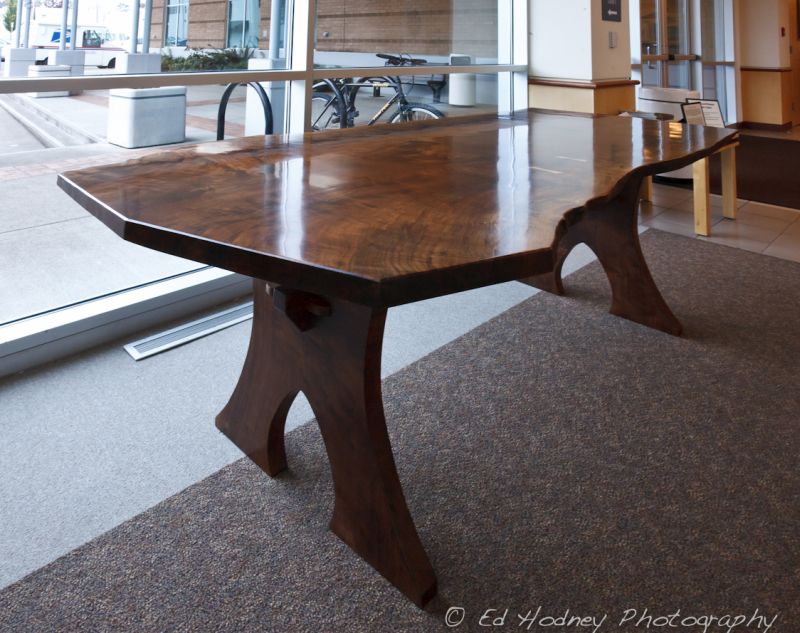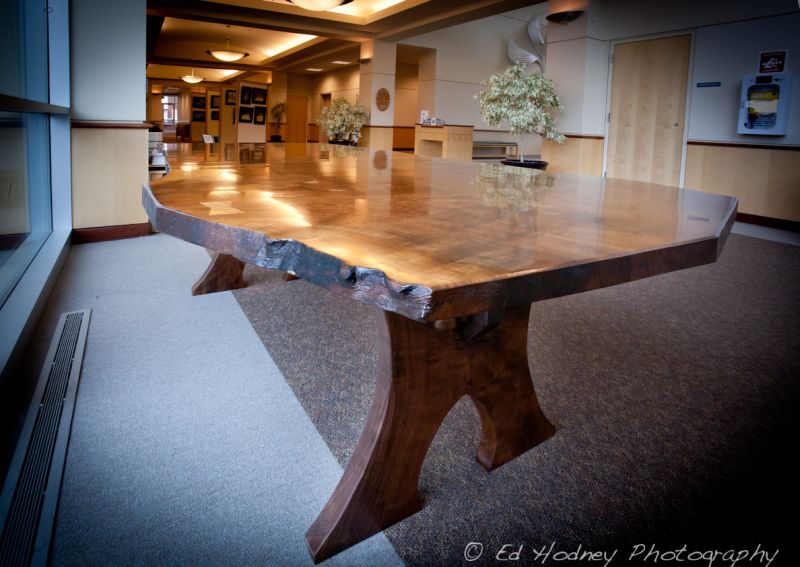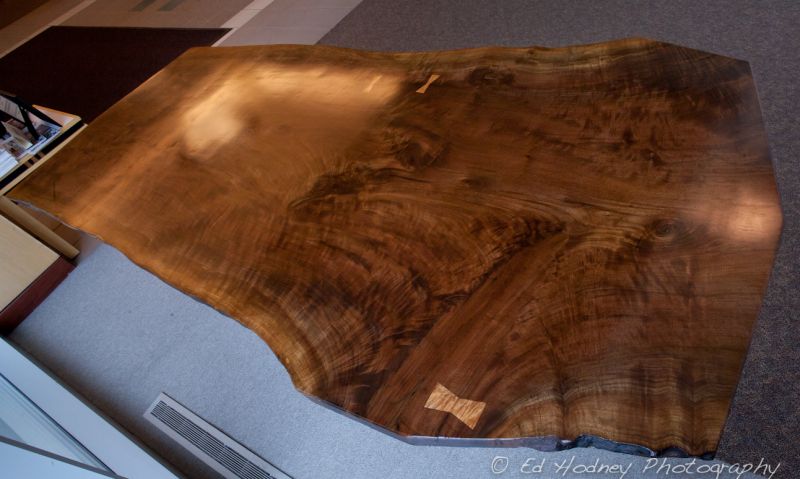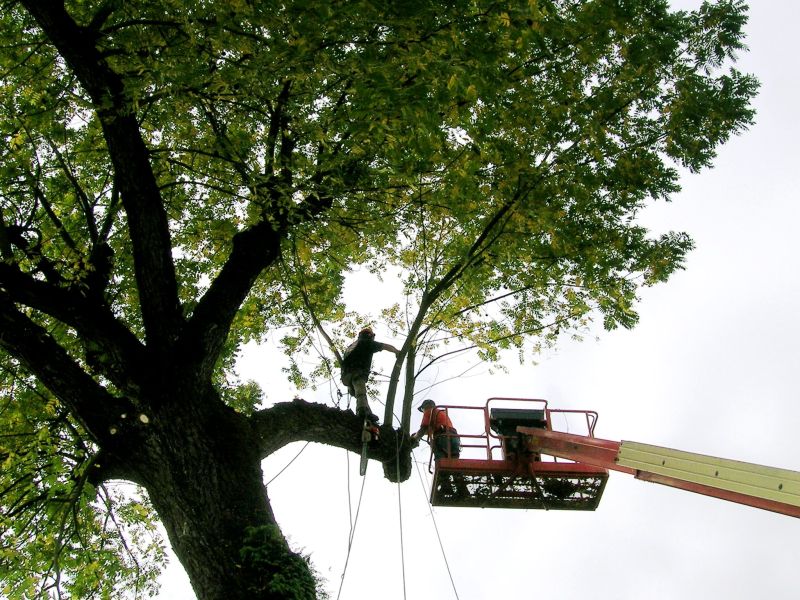Drying a Walnut Slab
This thread about how to slowly air-dry a Walnut slab has some beautiful photos of a Walnut slab table. August 16, 2012
Question
I have just acquired two walnut slabs 36" in diameter x 4" thick that I would like to use for table tops. What's the best way to dry them?
Forum Responses
(Sawing and Drying Forum)
From contributor M:
Walnut is fairly forgiving to dry, but any wood that is 4 inches thick can be a challenge to dry with minimal defect. To dry these large slabs, be sure that you seal the ends of the slabs with lumber/log sealer (not paint) ASAP. Then place the slabs in a shaded area that has good air flow and stack them with 3/4 inch thick stickers spaced 20 inches apart to allow airflow between each slab. Cover the top slab with tin or a layer of low grade lumber with stickers between the top slab and protective cover.
Let the slabs air-dry until the wood is dried to less than 20% moisture content. This will take some time (years) so be patient. Once the wood moisture content is below 20% it can be slowly dried in a kiln to something around 10 or 11%. It is now safe to work the wood into a table top.
Below is a table that I just completed made from walnut that was air dried for 5 years, then kiln dried. I donated the table to raise money for a natural area here in Western Oregon. Good luck and be patient. Rewards come to those that wait.

Click here for higher quality, full size image

Click here for higher quality, full size image

Click here for higher quality, full size image
From contributor D:
That's a dynamite looking table. Job well done!
From Professor Gene Wengert, forum technical advisor:
Awesome. Thanks for spending your time for such a good cause, too.
From contributor S:
Slabs or cookies? Sounds like you have rounds cut off the end of a log. Good luck drying them.
PEG might be the best way to go.
From contributor T:
Contributor M, beautiful work. Do you have a website?
To the original questioner: good luck, and don't cut any corners in drying. From all I've ever read, a cookie is the toughest to dry.
From contributor M:
Thanks for the kind words about the table. I do not have a website. I primarily saw and dry native Oregon hardwoods and build an occasional piece of furniture or lathe good. I do not make my living doing this (although I work very hard at my paying job and do not live with excesses), so can afford to take the needed time to work large wood projects. There is nothing more satisfying than starting with a tree and finishing with something like the table. It is magical and very satisfying. Thank you for appreciating my efforts.

Click here for higher quality, full size image
From contributor B:
I thought the same as Contributor S, since the diameter is part of the dimensions. There has been a great deal of discussion in the past about drying cross cut pieces of wood. The bottom line is that they will crack. If I remember correctly the general consensus was to cut the piece into wedges, let them dry and then work the wood so they fit back together.
From contributor O:
I use a local guy for drying walnut. He will take it from 28 percent air dry and then kiln dry it in 2 weeks to 8%, in a heat kiln. Is this way too fast? I get lots of material that curls or twists from him. He says no, but I thought walnut took lots of kiln time.
From Professor Gene Wengert, forum technical advisor:
Contributor M has what I consider to be the correct approach, although it is conservative. Conservativeness in this case means success. Check the MC by weighing the entire piece and when the weight loss stops (and the weather is warm so that if there were more water to be evaporated, then you would have seen a weight loss), consider moving the piece into a warm room (kiln, but not the typical steam kiln) for further drying.
I would add that two coats of commercial end coating should be used and the coating must be quite thick, so do not paint it on like you might apply paint to a wall in a room - glop it on. End checks are a huge problem with walnut. I would also put coating on and around any knots on the faces. As such, wood will dry fast and can shrink and cause checking, if not well coated.



